Are you looking to make your home more eco-friendly? With the right steps, you can reduce your carbon footprint and contribute to a healthier planet. In this article, we will guide you through various strategies to transform your home into an environmentally friendly space. From energy-saving appliances and efficient lighting solutions to sustainable materials for construction and renovation, we’ll provide you with practical tips that will not only benefit the environment but also save you money in the long run. Get ready to make a positive impact with these simple yet effective changes!
Energy-Saving Appliances and Electronics
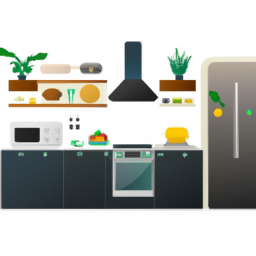
To make your home more eco-friendly, you should consider investing in energy-saving appliances and electronics. Energy efficient appliances are designed to consume less electricity, reducing both your carbon footprint and your energy bills. These appliances often come with the ENERGY STAR label, which indicates that they meet strict energy efficiency guidelines set by the Environmental Protection Agency.
When it comes to electronics, smart home technology is a great option for saving energy. Smart thermostats, for example, can automatically adjust the temperature based on your preferences and occupancy patterns, ensuring that you’re not wasting energy heating or cooling an empty house. Similarly, smart power strips can detect when devices are not in use and shut off power to them completely, eliminating standby power consumption.
Investing in these energy-saving appliances and electronics not only benefits the environment but also offers long-term savings for homeowners. By reducing your energy consumption, you’ll see a decrease in your monthly utility bills. Additionally, many utility companies offer rebates or incentives for purchasing energy-efficient products.
Efficient Lighting Solutions
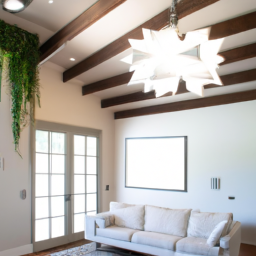
Switching to LED bulbs is a cost-effective and energy-efficient lighting solution for your house. LED lighting has gained popularity due to its numerous benefits, including lower energy consumption and longer lifespan compared to traditional incandescent bulbs. With LEDs, you can reduce your electricity bills while also reducing your carbon footprint.
LED bulbs use significantly less energy than incandescent or fluorescent lights, making them an excellent choice for efficient lighting in your home. They convert almost all the electricity they consume into light, with minimal wasted energy as heat. This not only saves you money but also helps conserve natural resources.
In addition to being energy-efficient, LED lighting offers another advantage – natural daylighting. Some LED bulbs are designed to mimic natural sunlight, providing warmer tones during the day and cooler tones in the evening. By replicating natural light patterns, these bulbs can enhance your mood and create a more comfortable living environment.
Furthermore, LEDs have a longer lifespan than traditional bulbs, which means fewer replacements and less waste generated. On average, an LED bulb can last up to 25 times longer than an incandescent bulb. This extended lifespan reduces maintenance costs and contributes to a greener lifestyle by reducing the number of discarded bulbs in landfills.
Sustainable Materials for Construction and Renovation
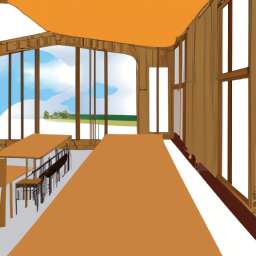
For a more sustainable approach to construction and renovation, consider using materials that are environmentally friendly and promote energy efficiency. Eco-friendly building materials not only reduce the negative impact on the environment but also contribute to creating a healthier living space for you and your family. When embarking on eco-conscious home renovations, it is important to choose materials that are renewable, non-toxic, and energy-efficient.
One popular choice for eco-friendly construction is bamboo. Bamboo is a rapidly renewable resource that grows quickly without the need for pesticides or fertilizers. It can be used in various applications such as flooring, countertops, and even structural elements like beams. Another option is reclaimed wood which takes advantage of existing resources by repurposing old wood from demolished buildings or salvaged timber.
In addition to using sustainable woods, incorporating recycled materials into your home renovations can greatly reduce waste. Recycled glass tiles, for example, can add a unique touch to your kitchen backsplash or bathroom walls while diverting glass from landfills.
When selecting insulation materials, opt for those made from natural fibers like wool or cellulose instead of synthetic options like fiberglass. These natural alternatives not only provide excellent thermal performance but also have low embodied energy.
Water Conservation Strategies

Using low-flow fixtures and appliances, such as toilets and showerheads, can significantly reduce water consumption in your home. By making this simple change, you can contribute to water conservation efforts and lower your utility bills at the same time. Additionally, there are other strategies you can implement to further enhance your water conservation practices.
One effective strategy is greywater recycling. Greywater refers to the relatively clean wastewater generated from activities like washing dishes, doing laundry, or taking showers. Instead of letting it go down the drain, greywater can be collected and reused for purposes such as watering plants or flushing toilets. This not only reduces the strain on freshwater resources but also minimizes the amount of wastewater that needs to be treated.
Another strategy is rainwater harvesting. Collecting rainwater allows you to harness a free source of water that would otherwise go unused. You can install rain barrels or cisterns to capture rainwater from rooftops and use it for tasks like irrigation or cleaning outdoor spaces.
Waste Reduction and Recycling Tips
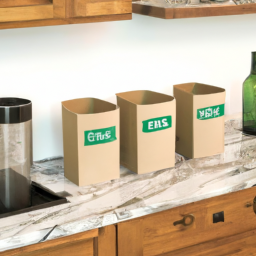
To reduce waste and recycle effectively, start by implementing these simple tips in your daily routine. One way to minimize waste is by practicing composting methods. Composting allows organic materials like food scraps, yard trimmings, and paper to decompose naturally and become nutrient-rich soil that can be used for gardening or landscaping. By composting, you divert waste from landfills while creating a valuable resource for your plants.
Another important step is reducing single-use plastics. These products are designed for convenience but have a significant impact on the environment. Instead of using disposable water bottles, switch to reusable ones made from stainless steel or glass. Similarly, opt for reusable shopping bags instead of plastic bags when you go grocery shopping.
Additionally, consider purchasing items with minimal packaging or those made from recycled materials. Look for products that are labeled as recyclable and make sure to properly sort them into your recycling bins.
Indoor Air Quality Improvement

Improve the indoor air quality in your home by regularly cleaning and dusting surfaces to remove pollutants that can negatively impact your health. Did you know that the air inside your home can actually be more polluted than the air outside? Indoor air pollution can come from a variety of sources, such as dust, pet dander, mold spores, and even volatile organic compounds (VOCs) emitted by household products. These pollutants can lead to respiratory problems, allergies, and other health issues. To combat this problem, it is important to take steps to improve the indoor air quality in your home.
One effective way to do this is by using air purifiers. Air purifiers are devices that help remove contaminants from the air. They work by pulling in polluted air and passing it through filters that capture particles like dust, pollen, and smoke. By using an air purifier in your home, you can significantly reduce the amount of airborne pollutants circulating indoors.
Another important factor in improving indoor air quality is proper ventilation. Ventilation systems help exchange stale indoor air with fresh outdoor air, reducing the concentration of pollutants inside your home. Opening windows and doors whenever possible can also help promote better airflow.
Green Landscaping and Gardening Practices
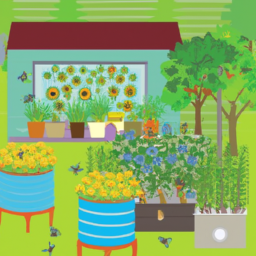
Did you know that implementing green landscaping and gardening practices can help create a more sustainable outdoor environment? By incorporating eco-friendly fertilizers and natural pest control methods, you can make a positive impact on the planet while still enjoying a beautiful and thriving garden.
Using eco-friendly fertilizers is an essential part of creating a sustainable outdoor space. Traditional fertilizers often contain harmful chemicals that can leach into the soil and waterways, causing damage to ecosystems. However, there are now many alternatives available that are made from organic materials such as compost or seaweed extracts. These natural fertilizers provide your plants with the nutrients they need without harming the environment.
In addition to using eco-friendly fertilizers, opting for natural pest control methods is another way to maintain an environmentally friendly garden. Chemical pesticides not only kill pests but also harm beneficial insects and pollinators. Instead, try using companion planting techniques, which involve growing certain plants together to repel pests naturally. You can also attract beneficial insects like ladybugs and lacewings by planting flowers that they love.
Renewable Energy Options for Your Home

Did you know that solar panels are a popular and cost-effective option for powering your home with renewable energy? Solar panel installation is becoming increasingly accessible and affordable, making it an attractive choice for homeowners looking to reduce their dependence on fossil fuels. By harnessing the power of the sun, solar panels can generate electricity to meet your household’s needs while also reducing your carbon footprint.
The process of installing solar panels involves mounting them on your roof or in an open area where they can receive maximum sunlight exposure. These panels convert sunlight into direct current (DC) electricity, which is then converted into alternating current (AC) electricity using an inverter. This AC electricity can then be used to power your home appliances and lighting.
In addition to solar panel installation, another renewable energy option for your home is wind turbine integration. Wind turbines harness the natural power of the wind to generate electricity. They work by capturing kinetic energy from the wind and converting it into electrical energy through a generator. Wind turbines are most effective in areas with consistent strong winds.
By incorporating both solar panels and wind turbines into your home’s energy system, you can maximize the generation of clean and sustainable power. Not only will this help reduce your reliance on non-renewable sources, but it will also lead to long-term cost savings on your energy bills.
Making the switch to renewable energy options like solar panels and wind turbines is not only beneficial for the environment but also for your wallet. The initial investment may seem daunting, but over time you will see significant savings as you generate free electricity from these renewable sources. Additionally, many governments offer incentives such as tax credits or rebates to encourage homeowners to adopt renewable energy solutions.
Imagine having peace of mind knowing that you are actively contributing towards a cleaner planet while also saving money on your utility bills. With solar panel installation and wind turbine integration, you have the power within reach to make a positive impact on our environment while enjoying all the comforts of your home.
Eco-Friendly Cleaning and Household Products
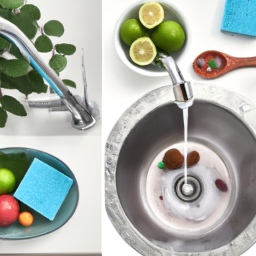
You can easily switch to using environmentally-friendly cleaning and household products. Making this simple change not only benefits the environment, but also promotes a healthier and safer living space for you and your family. When it comes to eco-friendly laundry, opt for detergent brands that are free from harsh chemicals and artificial fragrances. Look for labels that indicate biodegradable or plant-based ingredients. These products are just as effective at removing stains and odors, without leaving behind any harmful residues.
In addition to eco-friendly laundry detergents, there are plenty of other non-toxic options for keeping your home clean. For surface cleaners, choose natural alternatives like vinegar or baking soda. These common household items have powerful antimicrobial properties and can tackle tough messes without introducing harmful toxins into your home.
When it comes to personal care products such as hand soaps, shampoos, and body washes, seek out brands that use natural ingredients and avoid synthetic chemicals like parabens and phthalates. These substances have been linked to various health issues including hormone disruption.
Sustainable Transportation Alternatives
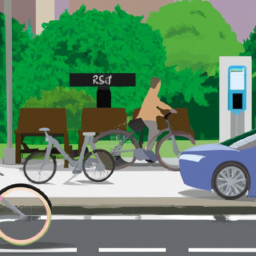
When considering sustainable transportation alternatives, it’s important to explore options that reduce carbon emissions and promote a greener future. One such option is electric scooters. Electric scooters are becoming increasingly popular as an eco-friendly mode of transportation in urban areas. They are powered by electricity, which means they produce zero emissions and have a much smaller carbon footprint compared to traditional gasoline-powered vehicles.
Electric scooters are not only environmentally friendly but also cost-effective. They require less maintenance and are more energy-efficient than cars or motorcycles. Additionally, they can help alleviate traffic congestion as they take up less space on the road.
Another sustainable transportation alternative is carpooling initiatives. Carpooling involves sharing rides with others who have similar commutes or destinations. By carpooling, you can reduce the number of vehicles on the road, leading to fewer carbon emissions and less air pollution.
Carpooling not only helps the environment but also has economic benefits. It allows participants to save money on fuel costs, parking fees, and vehicle maintenance expenses.
Frequently Asked Questions
Are There Any Specific Brands or Models of Energy-Saving Appliances and Electronics That Are Recommended?
Are there any specific brands or models of energy-saving appliances and electronics that are recommended? Absolutely! When it comes to saving energy in your home, you’ll want to look for trusted brands like Energy Star, which offers a wide range of efficient appliances. Some popular models include the Samsung EcoBubble washing machine and the Nest Learning Thermostat. These products not only help reduce your carbon footprint but also save you money on utility bills. So make the switch today and start enjoying a more eco-friendly home.
What Are Some Alternative Options for Efficient Lighting Solutions Besides LED Bulbs?
Solar powered lamps and compact fluorescent lamps are both great alternatives for efficient lighting solutions besides LED bulbs. Solar powered lamps use renewable energy from the sun, making them environmentally friendly and cost-effective in the long run. Compact fluorescent lamps, also known as CFLs, use less energy than traditional incandescent bulbs and last much longer. These options not only help reduce your carbon footprint but also save you money on your electricity bills.
How Can I Ensure That the Sustainable Materials Used for Construction and Renovation Are Also Safe for My Family’s Health?
To ensure the safety of your family’s health, it is crucial to choose sustainable construction materials that are also safe. When selecting materials, consider their potential health implications and look for certifications like GREENGUARD or Cradle to Cradle that indicate low chemical emissions. Opt for natural and non-toxic alternatives such as recycled content, VOC-free paints, and formaldehyde-free insulation. Prioritizing the health aspect along with sustainability will create a home environment that is both eco-friendly and safe for your loved ones.
Are There Any Water Conservation Strategies That Can Be Implemented in Areas That Experience Frequent Droughts?
Are you looking for water scarcity solutions in areas prone to drought? There are innovative water conservation methods that can be implemented. By installing low-flow fixtures and appliances, such as toilets and showerheads, you can significantly reduce your water usage. Additionally, collecting rainwater through a rain barrel system can help conserve water for gardening or other non-potable uses. Implementing these strategies not only helps address the issue of water scarcity but also contributes to making your home eco-friendly.
What Are Some Creative Ways to Repurpose or Upcycle Household Items to Reduce Waste?
Looking for creative ways to reduce waste and give new life to household items? Repurposing furniture and upcycling clothing are great options! By repurposing old furniture, you can transform it into something functional and stylish. Upcycling clothing allows you to turn unwanted garments into trendy fashion pieces. These practices not only help reduce waste but also add a unique touch to your home and wardrobe. So, why not embrace the eco-friendly trend and get creative with repurposing and upcycling?
Conclusion
In conclusion, by implementing these eco-friendly practices in your home, you are not only reducing your carbon footprint but also creating a healthier living environment for you and your family. From energy-saving appliances and efficient lighting solutions to sustainable materials and water conservation strategies, every small step counts towards a greener future. Additionally, adopting waste reduction and recycling habits, incorporating green landscaping techniques, utilizing renewable energy sources, choosing eco-friendly cleaning products, and exploring sustainable transportation options can further contribute to a more sustainable lifestyle. So why not make the switch today? Start making your home eco-friendly and be part of the solution for a better tomorrow.